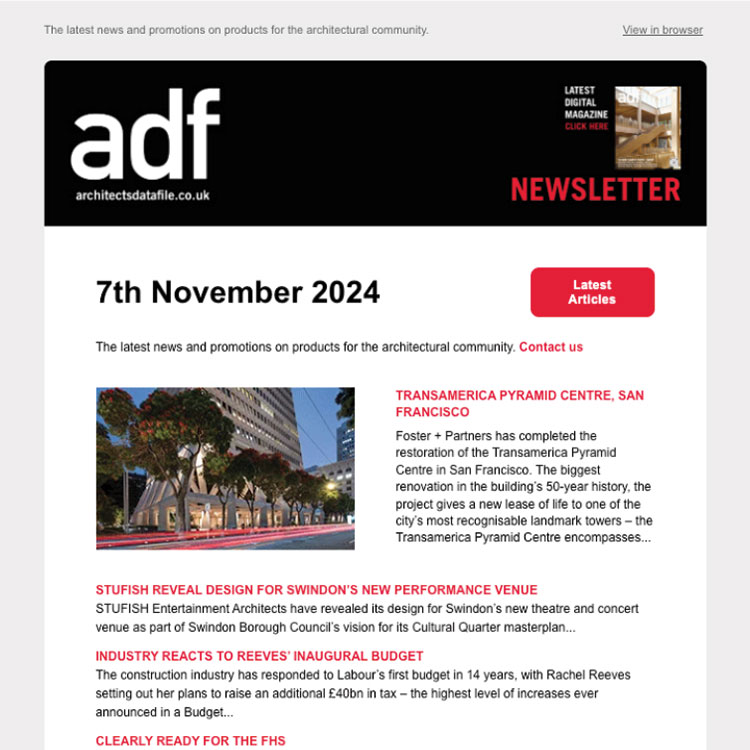Andrew Mitchell of NBT (Natural Building Technologies) discusses the challenges of achieving design integrity at building interfaces, for insulation or air-tightness
The role of the architect in the design and construction process has changed over the years, with many of the responsibilities that used to sit with the architect now shared between a disparate collection of consultants. The ‘blank spaces’ between their remits have left a gap where there is often a lack of joined-up thinking to ensure that all elements of the project work effectively as a whole. A primary example of the impact of this fragmentation is the critical interfaces between different building envelope elements, particularly structural, acoustic and thermal, (delivering either insulation or airtightness). With the main contractor delegating responsibilities to a multitude of subcontractors, we have developed a construction process where supply chain partners are responsible for their own elements of a complex jigsaw, but are not fully engaged with those responsible for the other pieces of the puzzle. With the architect and the engineer also working independently, and often novated to the principal contractor, there is often no central role to ensure that the interfaces are as robust as possible. As a result, unresolved elements are often ‘discovered’ during the construction process, leading to delays, waste, and the potential for increased costs combined with poorer final results.
The performance gap
Advances in building materials and increasingly strict Building Regulations have delivered significant improvements to the performance of the building envelope of contemporary buildings, compared with those built only a handful of decades ago…on paper, at least. We have also seen a wealth of sustainable and renewable materials enter the mainstream of specification, as both architects and their clients recognise that a more environmentally responsible approach to construction can actually reduce the cost of the building rather than add to the bottom line. Woodfibre insulation is an excellent example of this attitude shift, providing excellent thermal and hygroscopic performance along with carbon ‘lock up’ credentials. The problem is that elements within the envelope build-up can only deliver their designed performance if the interface is fully integrated in order to prevent thermal bridging and heat loss. If, as is often the case, the interfaces are far less robust and well-detailed than they appear on paper, we lose the opportunity for creating more thermally efficient and airtight buildings, while adding significant construction cost through increased time, increased material waste, and failures that can lead to costly snagging. Worse still, if the physics of the building are not properly understood, totally inappropriate materials may be used, which could lead to overheating in the summer months – or major moisture issues affecting the integrity of the building or the health of the occupant. So, while the specification may add up to excellent thermal performance and energy efficiency, the constructed building may not deliver the level of durability, comfort, energy savings or service life calculated at design stage.
What’s the answer?
For some, part of the answer is modular construction where envelope solutions can be created in factory conditions to deliver real, measurable thermal performance, without compromising the integrity of the building or the health of the occupier. There are lessons to be learned from the modular approach – which can be used to transition this standardised model into the less uniform world of onsite construction too. What’s required are new build systems for the building envelope, which consider the full ‘foundation-to-wall-to-roof’ build-up required for different types of construction, including clad and brick clad timber frame structures as well as CLT (cross-laminated timber), steel and concrete designs with both clad and rendered external finishes. In this way, insulation suppliers can provide a total solution for the interface design with an inclusive package of products to provide everything required for consistent installation.
Supply chain engagement
The idea is to align improved design integrity and building performance with a real-world approach to answering buildability issues, time pressures and skills shortages. If suppliers offer a single-source, consistent specification and work with specifiers and contractors to advise them and develop the specification, they can ensure the specific interface detail used is the right fit for the individual project, contributing to quality assurance. Collaboration has become a buzzword in construction, but supplier engagement is often the missing link in this process because so many specification choices are made as a procurement function rather than as an integral part of the early design process and buildability analysis. Architects should expect suppliers to be more than a company that simply sells products. Instead the supply chain should be challenged to actively contribute to the performance of the finished building and the expertise needed to improve the design of the critical interfaces within the building envelope.
Andrew Mitchell is managing director of NBT (Natural Building Technologies)


